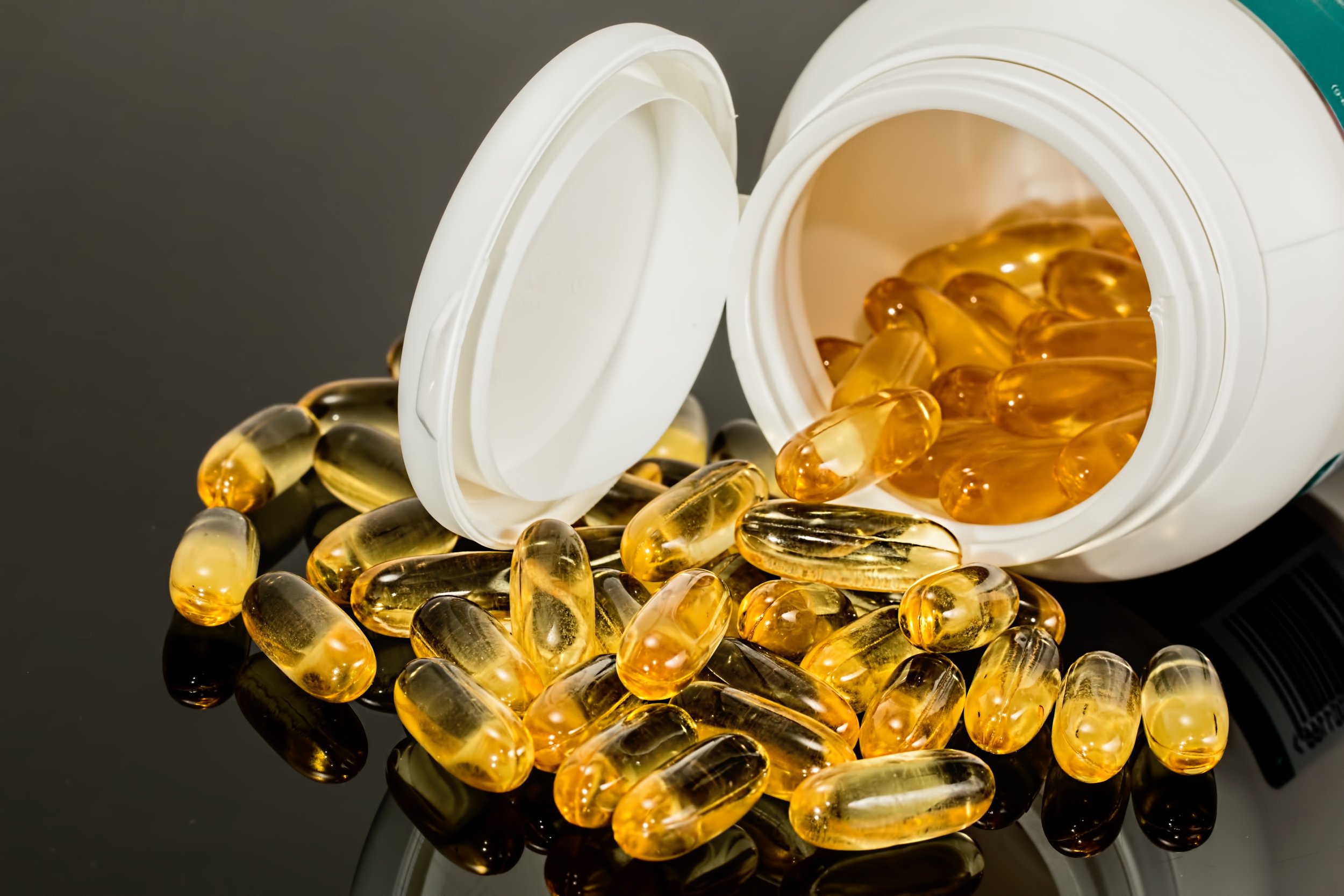Prenatal Vitamins: Are They A Waste Of Money?
Multivitamins are exactly what they sound like: multiple vitamins. They're supplements that contain several different vitamins in each one. They can also contain several minerals and other ingredients like amino acids or fatty acids. And because there are multiple ingredients, they contain low doses of each ingredient.
The difference between a regular old multivitamin and a prenatal is that a prenatal vitamin contains larger amounts of specific nutrients needed in pregnancy. The main nutrients a prenatal contains more of usually are folate (the natural form of Vitamin B-9; the synthetic form is called folic acid) and iron.
Additionally, the higher quality prenatals and multivitamins usually contain a higher amount of that specific vitamin than just the daily value (DV) percentage. For example, inside my favorite prenatal (Innate Response’s Baby & Me), is a Vitamin B6 amount of 320% of the daily value. While this may sound like a lot, it actually isn’t. The recommended daily amount of B6 set by the FDA is many times inadequate, and so many high-quality companies will add increase the amounts of important vitamins to an optimal but very safe level.
There are 13 vitamins and at least 16 minerals that are essential to health. You need certain amounts of all of these nutrients for optimal health. Nutrient deficiencies can absolutely impact your ability to conceive as well as impact your pregnancy, hormones, growth, and regulation of bodily processes.
Are Prenatals Even Needed?
You may have heard that if you follow a "balanced diet," you'll get enough vitamins and minerals. I personally would love to believe it … but it's just not true. Many people are eating way too much processed food that is devoid of nutrition.
And nowadays, even if you are eating somewhat of a healthy whole foods diet, the soil that many foods have been grown in now is incredibly depleted of vitamins and minerals. Our current agricultural methods have not only depleted the soil itself, but these methods have also produced fast growing foods which cannot absorb nutrients at the same rate as they did previously.
A healthy diet of course is the best way to get optimal amounts of needed nutrients, but a multivitamin can definitely help fill in any gaps.
Nutritional deficiencies in pregnancy have been linked to some birth defects and congenital abnormalities. Additionally, poor maternal nutrition has been shown to raise an offspring’s susceptibility to chronic disease in adulthood, including diabetes, hypertension, coronary artery disease and stroke. And, insufficient nutrition during pregnancy has also been associated with an increased risk of maternal and infant mortality.
So, clearly nutrient deficiencies in pregnancy are nothing we want to mess around with!
Is it Worth it to Take a Multivitamin if You’re Not Trying to Conceive?
Multivitamins have been studied a lot.
The quality of the multivitamins which have been studied, though, have not been consistent. Some studies consider any supplement with at least three vitamins to be a "multivitamin." Most of the time, the multivitamins studied are ones that are very popular and are available everywhere. Even with that said, there seems to be quite a lot of positives to taking a multivitamin.
Here’s a quick summary of some of the science:
Multivitamin use is linked with improved moods. Interestingly, if someone has nutrient deficiencies, they may have mood imbalances. So, if the multivitamin addresses an underlying deficiency, this makes sense.
In terms of memory and cognitive performance (ability to think), there seems to be an improvement in people who regularly take multivitamins.
In terms of cataracts and age-related macular degeneration, there seems to be a slight improvement.
In terms of heart disease, the results are mixed. There may be an increase, or a decrease, or no effect on risk of heart attacks.
In terms of cancer, there is a slightly reduced risk of certain cancers in men.
In terms of mortality (death), there doesn't seem to be a clear increase or decrease in mortality rates for people who take multivitamins.
What’s the result of all of this? Well, there's a lot of research that shows many people just don't get enough vitamins and minerals in their daily nutrition.
What to Look for in a Prenatal
Not all multivitamins (including prenatal multivitamins) are created equal. Synthetic vitamins are those artificially created in the lab. Since they are usually a cheaper source of the vitamin, many companies will use synthetic vitamins to save money. But the body does not recognize synthetic vitamins in the same way as vitamins sourced from real food and so they may not be absorbed or utilized by the body.
For example, some brands may choose to use Vitamin D2 (ergocalciferol) as opposed to the Vitamin D3 (cholecalciferol). While Vitamin D2 is cheaper for the manufacturer, it is a less usable form of Vitamin D.
Here are some other things to look for when buying a prenatal (and multivitamin):
Buy vitamins which are mostly food-based. This way the form you are ingesting is bioavailable and the form your body recognizes as food.
Buy from companies who have third party testing. Third party testing ensures that there are no heavy metals or contaminants as well as makes sure the potency and ingredients claimed to be in the bottle are actually what’s in the bottle.
When possible, buy from companies who use non-GMO or organic ingredients.
When in doubt, ask a trusted health practitioner. They are the ones who have hopefully researched the companies they recommend, making sure they are both safe and effective. My personal favorite prenatal brand is Innate Formula’s Baby & Me, but I also like the prenatals from Thorne and Metagenics as well.
Do not use a prenatal or regular vitamin with folic acid. Instead, look for folate or methyl-folate.
All in all, multivitamins aren’t magical “health pills.” They’re not guaranteed to improve your mental or physical health, or help you live longer; but they do have some health benefits.
Are Multivitamins Safe?
Just about every study that looked to see if multivitamins were health-promoting, also looked at side effects. They have consistently shown that multivitamins are very safe.
Now, I’m not talking about high-dose supplements. High doses of many nutrients can be harmful. But specifically for multivitamins where there are several nutrients included, all of which are in relatively low doses. Those are safe.
Unless you have a knowledgeable practitioner advise otherwise, you want to stick to the dose on the label. That dose is safe for most people.
The Main Nutrients Needed When Planning to Conceive
The most important nutrients to make sure you have enough during preconception and throughout a pregnancy (through nursing) are folate and iron. Additionally, magnesium, various Vitamin B’s, Vitamin D and essential fatty (especially DHA) are also important.
Folate is important to begin taking ideally even before you conceive. This nutrient helps prevent spina bifida, a condition where a portion of the neural tube does not develop properly and can cause issues in the spinal cord and spinal bones. When looking for a prenatal, it is also important to make sure that it contains folate over the synthetic form folic acid. The optimal amount to look for in a prenatal is between 600-800mcg.
Iron is an essential mineral and incredibly important to have at optimal levels ideally before you become pregnant. Iron helps transport oxygen to every cell throughout your entire body. When you become pregnant, there is an increased need for oxygen transport throughout not only your own body but also that of your quickly developing baby. An optimal amount of iron within a prenatal is around 20 to 30 micrograms.
Adequate Vitamin D is also essential for fertility, bone health, and pregnancy. If you are not getting adequate sun exposure (which most of us aren’t, even if we live in sunny climates), usually a minimum of 2,000 IUs daily is needed. I recommend getting your levels tested (25-hydroxy Vitamin D is the main value to test) and aim for a lab level of about 50-75 ng/ml. If you are below this amount, work with your health care practitioner on an increased dosage to take for 3 months and then retest.
Omega 3 fatty acids (EPA/DHA) are also important to take when trying to conceive as they are important for hormones, fertility, and your baby’s brain development once you are pregnant. For pregnancy, I recommend getting a product with about 600mg of DHA to support baby’s brain development. Usually, for this amount, you will need to take a separate supplement of this. The brands I like are Ovega-3 (algae based) and Nordic Naturals (fish based).
Conclusion
Taking a prenatal vitamin can be extremely helpful to your health and the health of your future baby. It’s important to begin taking as soon as you begin preparing to try to conceive and also throughout your pregnancy.
Since they contain low doses of many different nutrients, they're safe (as long as you have a quality product). Of course, taking a multivitamin is not a way to improve a poor diet. I always recommend eating a balanced diet of whole foods and lots of plants. There is plenty of evidence that eating a diet of whole, unprocessed food prevents many diseases.
Are you a woman trying to get pregnant and looking for more personalized guidance and support into natural ways to increase your fertility? Book a FREE Fertility Audit call with a member of our team here.
So, now on trying out my superfood salad - it’s like a multivitamin with benefits.
Recipe (Nutrient Dense): Superfood Salad
Serves 2
Ingredients
2 handfuls of greens (e.g. kale, spinach, arugula, etc.)
½ cucumber, chopped
1 avocado, chopped
1 bell pepper, chopped
1 carrot, grated
2 handfuls grape tomatoes
2 handfuls fresh berries
¼ cup hemp seeds
Salad Dressing
3 tbsp cider vinegar
2 tsp Dijon mustard
2 tsp honey or maple syrup
1 dash salt
2 dashes black pepper
1/3 cup extra virgin olive oil
Instructions
Grab two large bowls and put one handful of greens each.
Split all the rest of the fruits and vegetables, placing half in each bowl.
Make the dressing by whisking together the vinegar, mustard, honey/maple syrup, salt, and pepper. Slowly drizzle in olive oil while whisking to emulsify. Pour over salad before serving.
Top with hemp seeds.
Serve & enjoy!
References:
https://authoritynutrition.com/do-multivitamins-work/
https://lpi.oregonstate.edu/mic/life-stages/pregnancy-lactation
https://www.scientificamerican.com/article/soil-depletion-and-nutrition-loss/
http://thewellnessbusinesshub.com/yes-nutrient-deficiencies-heres-proof-can/
https://www.ncbi.nlm.nih.gov/pubmedhealth/PMH0022955/

